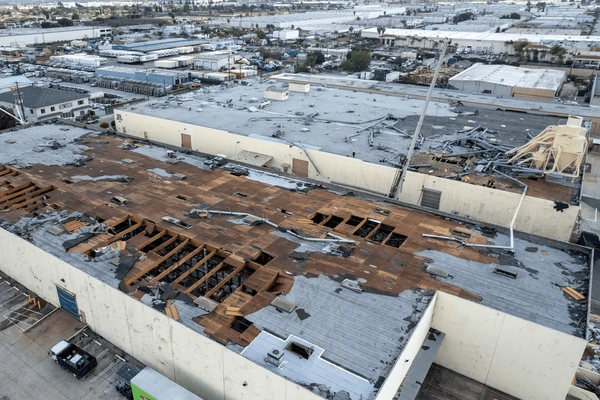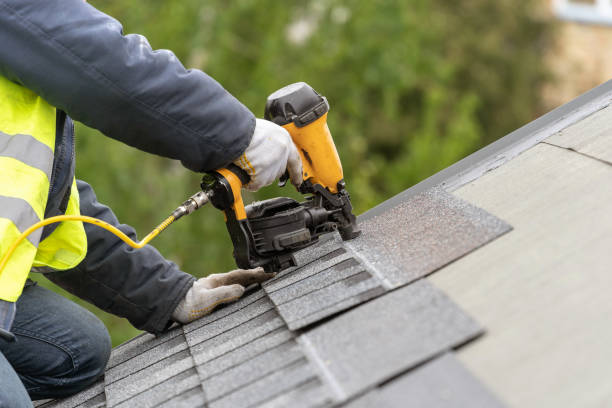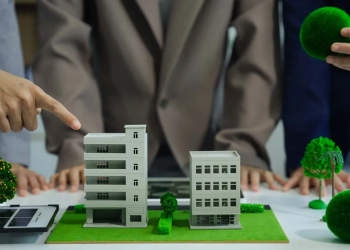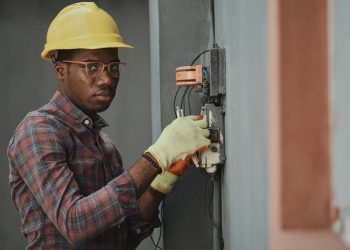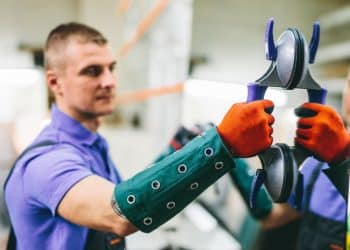Table of Contents
Your commercial building’s roof is more than just a protective barrier—it’s a critical investment that directly impacts your property’s value, energy efficiency, and long-term operational costs. As a building owner, understanding when and how to approach commercial roof replacement can save you thousands in emergency repairs while protecting your investment for decades to come.
When your roof starts showing signs of wear, finding the right professionals becomes essential. Working with an experienced roofing contractor who understands your local climate challenges and building requirements ensures your project meets both immediate needs and long-term performance expectations.
Recognizing When Your Commercial Roof Needs Replacement
The key to successful commercial roof management lies in recognizing replacement signals before they become costly emergencies. Most commercial roofing systems deliver 15-25 years of reliable service, but several factors can accelerate this timeline.
Watch for persistent leaks that return despite professional repairs, visible sagging or structural damage, and significant membrane deterioration. Interior water damage, unexplained increases in energy costs, or daylight visible through your roof structure indicate immediate replacement needs.
Climate plays a crucial role in roof longevity. Freeze-thaw cycles, heavy snow loads, and extreme temperature variations can compromise roofing materials faster than moderate climates. Regular inspections—especially after severe weather events—help identify problems before they escalate.
Understanding all aspects of roofing helps building owners make informed decisions about timing and materials. Additionally, maintaining comprehensive building protection through proper basement waterproofing creates a complete moisture management system that protects your entire investment.
Commercial Roofing Material Options: Making the Right Choice
Single-Ply Membrane Systems
TPO (Thermoplastic Polyolefin) leads the energy-efficient roofing market with its white reflective surface that reduces cooling costs while maintaining flexibility in temperature extremes. This system offers excellent UV resistance and chemical durability, making it ideal for buildings prioritizing energy efficiency.
EPDM (Ethylene Propylene Diene Monomer) rubber roofing provides exceptional weather resistance and longevity. Its black surface absorbs heat during cold months, potentially reducing winter heating costs, though summer cooling expenses may increase.
Built-Up Roofing Systems
Traditional built-up roofing (BUR) uses multiple layers of asphalt and reinforcing materials to create proven waterproofing performance. These systems handle heavy foot traffic well and offer excellent long-term durability, though they require more maintenance than modern alternatives.
Modified Bitumen Systems
Combining traditional asphalt with polymer modifiers creates flexible, durable roofing that performs well in varying temperature conditions. These systems offer excellent repairability and proven performance across diverse climates.
The Commercial Roof Replacement Process
Assessment and Planning Phase
Professional evaluation begins with comprehensive structural assessment, including load-bearing capacity, drainage efficiency, and building code compliance. Detailed documentation covers measurements, material specifications, and timeline projections while securing necessary permits and coordinating utility relocations.
Weather Timing Considerations
Climate significantly impacts installation success and material performance. Understanding how weather affects roofing helps building owners appreciate optimal timing windows and specialized installation techniques required for challenging conditions.
Most regions offer ideal installation windows during moderate weather periods, avoiding extreme temperatures that can compromise material performance. However, emergency replacements may require specialized cold-weather techniques and materials designed for challenging conditions.
Installation Process
Complete roof replacement typically involves systematic removal of existing materials, thorough roof deck inspection and repair, installation of new insulation and vapor barriers, and application of the new roofing system. Modern installations incorporate energy-efficient insulation, proper ventilation systems, and advanced drainage solutions.
Quality control measures include regular inspections, material testing, and comprehensive documentation of each installation phase. Professional contractors maintain detailed records and warranty documentation throughout the process.
Investment Considerations and Budgeting
[Image Placeholder: Calculator and building blueprints with cost analysis spreadsheet]
Commercial roof replacement costs vary significantly based on building size, material selection, structural requirements, and project complexity. Understanding these factors helps building owners budget effectively and avoid unexpected expenses.
Commercial Roofing System Comparison
|
Roofing System |
Expected Lifespan |
Maintenance Level |
Energy Efficiency |
Initial Cost |
|---|---|---|---|---|
|
TPO Membrane |
15-20 years |
Low |
High |
Moderate |
|
EPDM Rubber |
20-25 years |
Low |
Moderate |
Moderate |
|
Built-Up Roofing |
15-20 years |
Moderate |
Low |
Low |
|
Modified Bitumen |
15-20 years |
Moderate |
Moderate |
Moderate |
Source: National Roofing Contractors Association and Department of Energy
Budget considerations should include potential structural repairs, code compliance upgrades, and temporary weather protection during installation. Many contractors offer financing options to help manage these significant investments while maintaining cash flow.
Selecting the Right Commercial Roofing Professional
Choosing qualified roofing professionals requires careful evaluation of experience, licensing, insurance coverage, and local reputation. Look for contractors with specific experience in your climate challenges and proven track records with similar commercial projects.
Essential qualifications include proper state licensing, comprehensive insurance coverage, manufacturer certifications, and membership in professional organizations. Request references from recent commercial projects and verify completion dates and customer satisfaction.
Understanding differences between commercial roofing and residential roofers helps building owners select contractors with appropriate expertise and equipment for complex commercial projects.
Companies like Center Construction LLC demonstrate the importance of local expertise combined with professional credentials. Their experience with regional climate challenges and building code requirements ensures projects meet the highest standards of quality and durability.
Maintenance and Longevity Strategies
[Image Placeholder: Maintenance worker performing routine roof inspection with checklist]
Proper maintenance significantly extends commercial roof lifespan and prevents costly emergency repairs. Regular inspections, prompt minor repairs, and preventive maintenance programs help building owners maximize their roofing investment.
Seasonal maintenance should include debris removal, drain cleaning, sealant inspection, and membrane condition assessment. Professional maintenance contracts provide scheduled inspections and priority service for emergency repairs.
According to the General Services Administration, buildings with comprehensive maintenance programs experience 40% fewer emergency repairs and 25% longer roof lifespans compared to reactive maintenance approaches.
Energy Efficiency and Sustainability
Modern commercial roofing systems offer significant energy savings through improved insulation, reflective surfaces, and advanced vapor barrier technologies. Cool roofing systems can reduce cooling costs by 10-30% while improving occupant comfort.
Sustainable roofing options include recycled materials, green roof systems, and solar-ready installations. These systems often qualify for tax incentives and utility rebates, helping offset initial investment costs. Exploring sustainable roofing materials provides both environmental benefits and long-term cost savings.
The Environmental Protection Agency reports that cool roofing systems can reduce peak cooling demand by 10-15% while decreasing annual energy costs by 7-15% in moderate climates.
Making the Right Decision for Your Building
[Image Placeholder: Satisfied building owner shaking hands with contractor in front of completed roof project]
Commercial roof replacement represents a significant investment that directly impacts your building’s performance, value, and operational costs. Successful projects require careful planning, quality materials, and experienced installation professionals who understand local climate challenges.
Building owners who invest in quality materials and professional installation while maintaining regular maintenance schedules enjoy decades of reliable protection and improved energy efficiency. When the time comes for your commercial roof replacement, partnering with established local professionals ensures your project meets all requirements while providing exceptional value and long-term performance.
The key to success lies in recognizing replacement signals early, selecting appropriate materials for your climate and building requirements, and working with qualified professionals who prioritize quality and customer satisfaction. With proper planning and execution, your new commercial roof will protect your investment and enhance your building’s performance for decades to come.
Meta Title: Meta Description:

